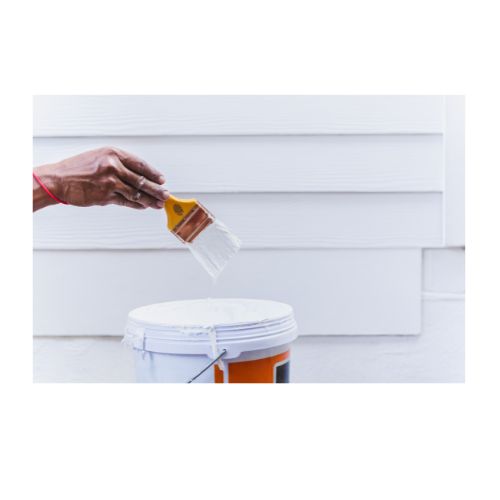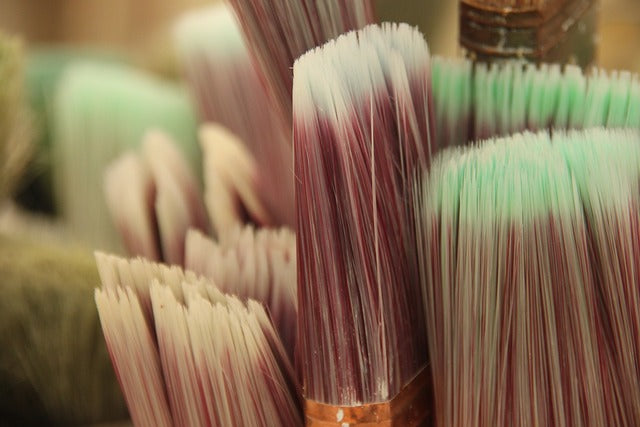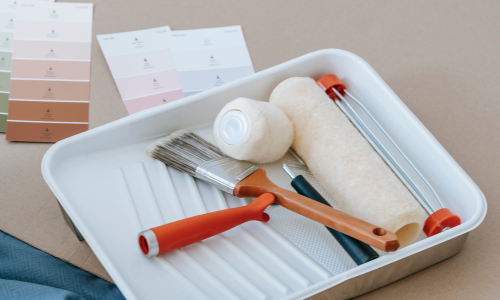Painting the vinyl siding of your home can make a huge difference in improving your home's exterior. Not only does it enhance your curb appeal, but it also provides added protection to your house. Painting vinyl siding is a cost-effective way to revitalize your home and give it a fresh, updated look. In this comprehensive guide, we will walk you through the step-by-step process of painting vinyl siding on a house, ensuring that you achieve professional-looking results.
Benefits of painting vinyl siding
Painting vinyl siding offers several benefits that go beyond mere aesthetics. One of the primary advantages is that it allows you to change the color of your home without the need for expensive replacements. By choosing the right paint, you can transform your house and give it a completely new look. Additionally, painting vinyl siding provides an added layer of protection against the elements, preventing moisture damage and extending the lifespan of your siding.
Assessing the condition of your vinyl siding
Before you start painting, it's important to assess the condition of your vinyl siding. Inspect for any signs of damage, such as cracks, chips, or loose panels. If any repairs are needed, address them before proceeding with the painting process. Clean your siding thoroughly to remove any dirt, grime, or mildew that may have accumulated over time. A clean surface ensures better paint adhesion and a smoother finish.
Preparing your vinyl siding for painting
Proper preparation is key to a successful vinyl siding painting project. Start by masking off areas that you don't want to paint, such as windows, doors, and trim. Use painter's tape and plastic sheeting to protect these surfaces. Next, give your siding a good scrub using a mixture of water and mild detergent. Rinse off the soap residue and allow the siding to dry completely before moving on to the next step.
Choosing the right paint for vinyl siding
Selecting the right paint for vinyl siding is crucial to achieving long-lasting results. Opt for a high-quality exterior paint that is specifically formulated for use on vinyl surfaces. Look for products that offer excellent adhesion, flexibility, and resistance to fading. Choose a color that complements your home's architectural style and blends well with the surrounding neighborhood.
Tools and materials needed for painting vinyl siding
To ensure a smooth and efficient painting process, gather all the necessary tools and materials beforehand. You will need a pressure washer or hose, scrub brush or sponge, painter's tape, plastic sheeting, sandpaper or sanding block, primer, paintbrushes, roller or paint sprayer, and of course, the paint itself. It's essential to invest in high-quality tools and materials to achieve professional-looking results and ensure the durability of the paint job.
Step-by-step guide on how to paint vinyl siding on a house
-
Clean and prepare the surface: Start by thoroughly cleaning the siding using a pressure washer or hose. Remove any dirt, mildew, or debris. Allow the siding to dry completely before proceeding.
-
Repair any damage: Inspect the siding for any cracks, chips, or loose panels. Repair or replace any damaged sections before painting.
-
Mask off areas: Use painter's tape and plastic sheeting to protect windows, doors, trim, and other surfaces you don't want to paint.
-
Apply primer: Apply a high-quality primer formulated for vinyl surfaces. This will ensure better adhesion and longevity of the paint job.
-
Paint the siding: Start at the top and work your way down, using a paintbrush or roller. Apply thin, even coats, allowing each coat to dry before applying the next.
-
Touch up and inspect: Once the paint has dried, inspect the siding for any missed spots or imperfections. Touch up as necessary.
Tips and tricks for a successful vinyl siding painting project
- Choose a day with mild weather conditions for painting to ensure optimal drying and adhesion.
- Always work in small sections to maintain a wet edge and avoid visible brush or roller marks.
- Consider using a paint sprayer for larger surfaces to achieve a more uniform finish.
- If using a roller, opt for one with a thick nap to ensure better coverage and paint penetration into the texture of the siding.
- Don't be afraid to experiment with color samples before committing to a particular shade. Test the color on a small, inconspicuous area to see how it looks in different lighting conditions.
Maintenance and care after painting vinyl siding
Once you have completed the painting process, it's important to maintain your vinyl siding to ensure its longevity and appearance. Regularly clean your siding with a mild detergent and water to remove dirt and debris. Avoid using harsh chemicals or abrasive cleaners as they can cause damage. Inspect your siding periodically for any signs of wear or peeling paint and address any issues promptly to prevent further damage.
Common mistakes to avoid when painting vinyl siding
While painting vinyl siding is a relatively straightforward process, there are some common mistakes that you should avoid:
- Skipping the cleaning and preparation process: Properly cleaning and preparing the surface is crucial to achieving a smooth and long-lasting paint job.
- Using the wrong type of paint: Using interior or low-quality paint can result in poor adhesion and premature paint failure.
- Applying thick coats of paint: Thick coats of paint can lead to drips, uneven coverage, and longer drying times. Apply thin, even coats for the best results.
- Neglecting maintenance: Once you have painted your vinyl siding, regular maintenance is essential to ensure its longevity and appearance.
Conclusion
Painting vinyl siding on a house is an effective way to revamp your home's exterior and give it a fresh, updated look. By following this step-by-step guide, you can achieve professional-looking results and enjoy the benefits of a newly painted exterior. Remember to assess the condition of your vinyl siding, properly prepare the surface, choose the right paint, and follow the recommended techniques. With the right tools, materials, and techniques, you can transform your home's exterior and create a beautiful, long-lasting finish.
Ready to give your home a makeover? Follow this comprehensive guide and enjoy the satisfaction of a job well done.



